The real estate market in India is a $300 Billion market. And about half of this is driven by real estate agents, locally known as brokers. BrokerNetwork is an ambitious project to standardise, regulate and monetise this pool of over a million brokers across the country.
The project
Build a product which helps property brokers run their entire business on their fingertips while making them more efficient, close deals faster without compromising on their safety and privacy.
The people behind the idea were real estate experts with several decades of experience. One of them founded India’s largest real estate portal while the other was co-author of RERA Act – the revolutionary act which seeks to protect home-buyers as well as help boost investments in the real estate industry in India.
This is important because as we moved forward with the project, a lot of this experience came into play while taking high level product decisions without relying on test data. Since the target demographic was pretty expansive (in terms of persona characteristics), insights collected from test data could have been unreliable.
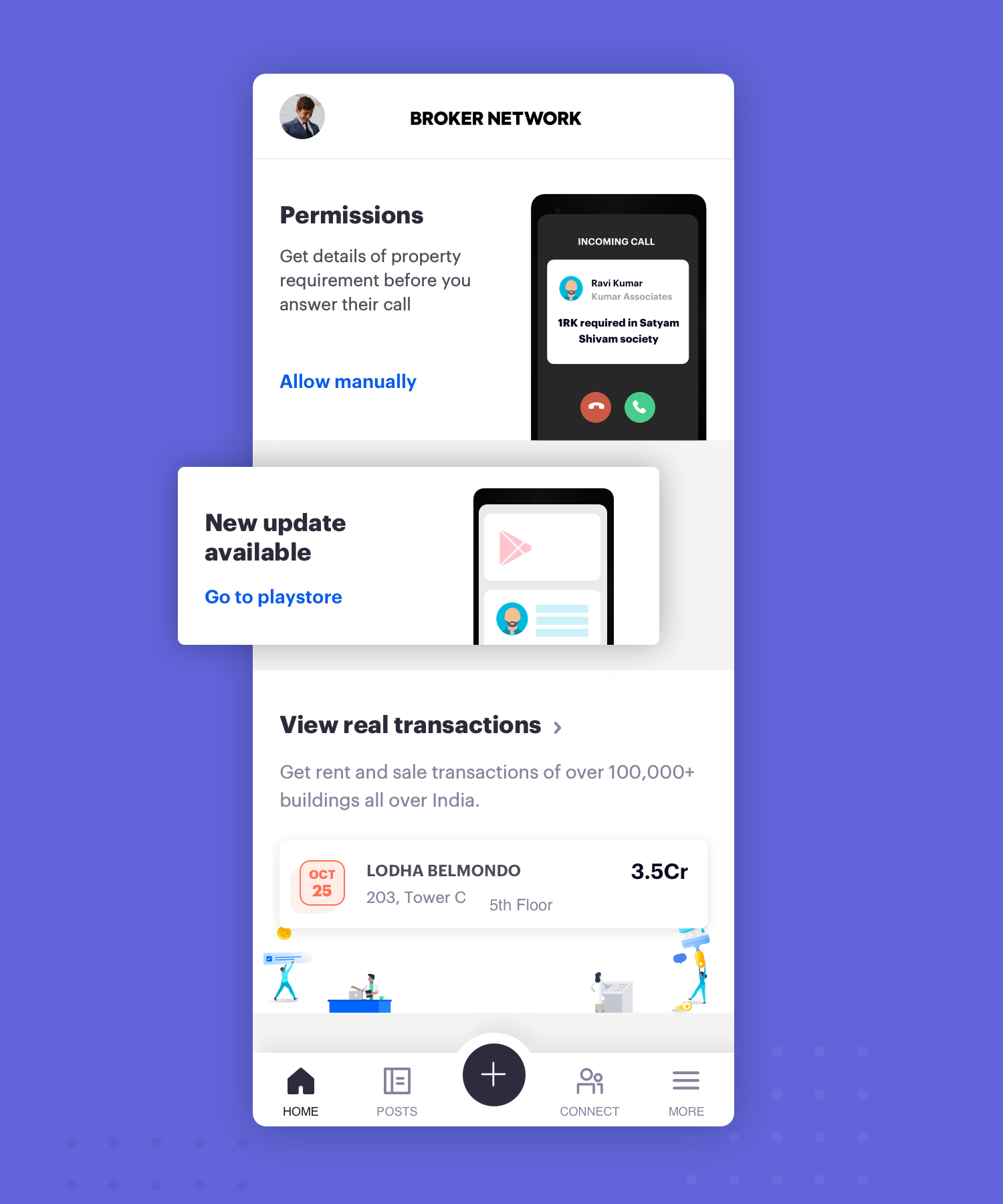
Scope
What I worked on
Research
Talk to users, create prototypes, get insights, improve.
Design
Sketches, wireframes, typography, visuals.
Strategy
Product planning, rollout plan, release cycles.
Analytics
Events, heatmaps, funnels, cohorts & real-time data visualisations.
Product Goal from day one
30 minutes of app usage every day, including 10 app-opens. Must result in 25% influence in property broking across India
Basic research revealed a lot of important facts about the industry
Like any project, I started with an extensive market research which included speaking to brokers, who were the prospect users, and home buyers/renters who would use their services.
Getting started
I was working with 3 teams. One was the parent company which gave me access to a lot of data on real estate sales, the statistics, and how the market works in general. Second was the on-ground team which was arranging interviews with meetings with the prospect users, the real estate agents. And third was the tech team which we were building on the go.
Step one
Creating the information architecture
It took us dozens of whiteboard drawings and brainstorming meetings to come up with very preliminary workflows. The scope became so expansive, that the number of directions the product could take quickly became overwhelming.
I started breaking down the flowcharts into meaningful, plug-and-play sections which can be built & tested separately based on all the information I had gathered until this point. This would help me create better user journeys for the next stage of design.
The tricky part about user journeys was to consolidate the gigantic scope of the app into meaningful, consumable modules which would not only help us manage release cycles better and keep it flexible enough for certain modules to work independently of other modules.
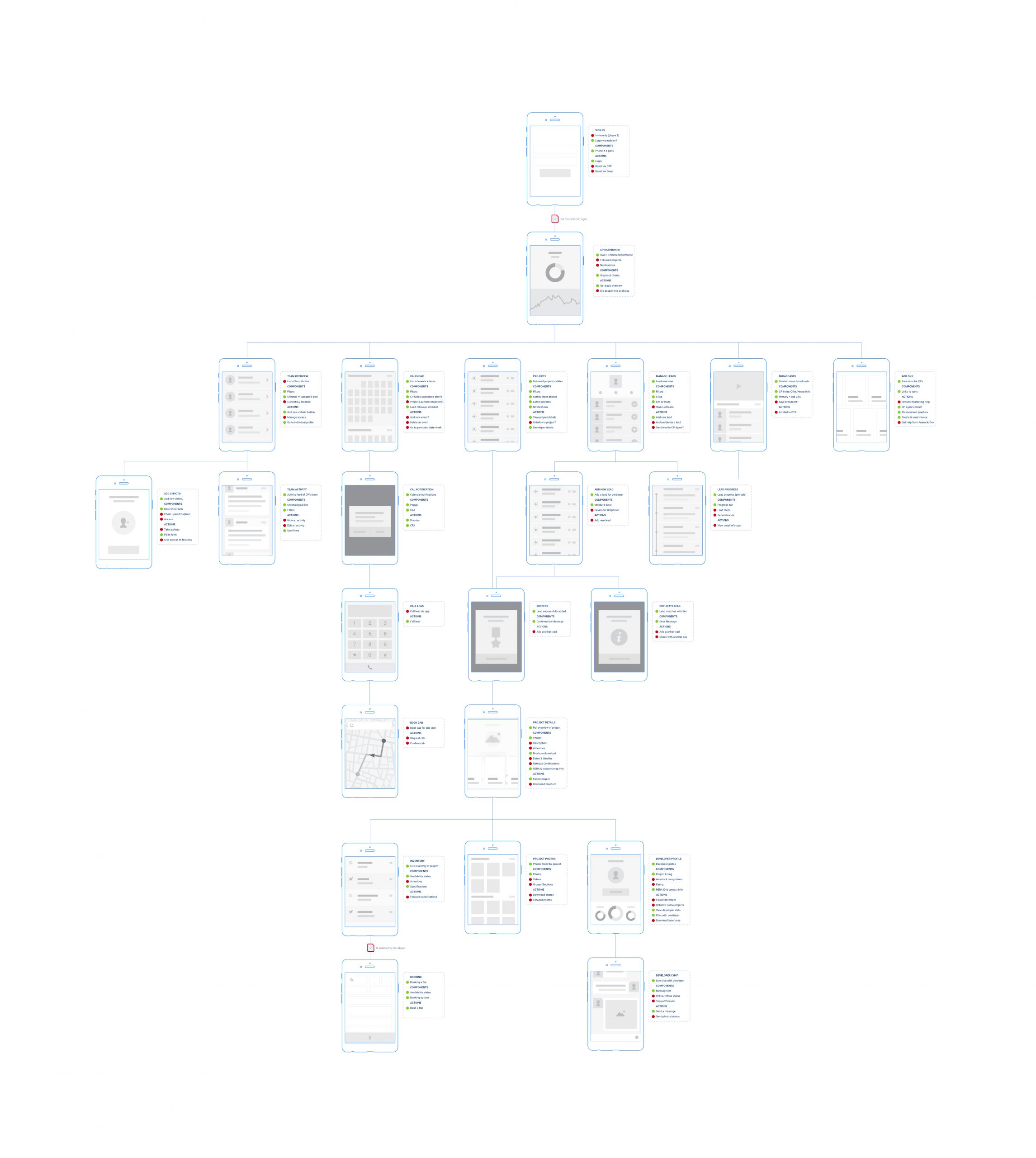



User journeys to wireframes
Getting the user journeys clearly mapped out helped me get a headstart for wireframing the app. Hundreds of possible screens were made which were, in turn, converted to several interactive prototypes which were shown to the prospect users. Each prototype was designed to give us insights on which features are the most appealing and which information hierarchy is the most intuitive.




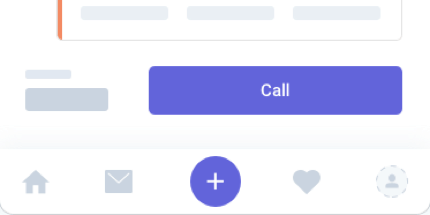

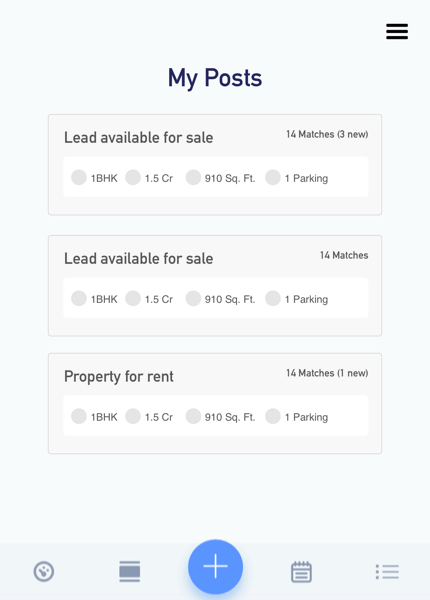

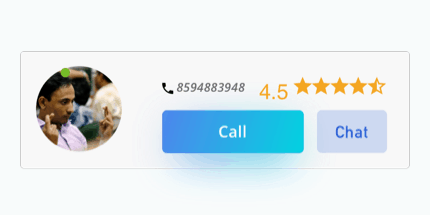
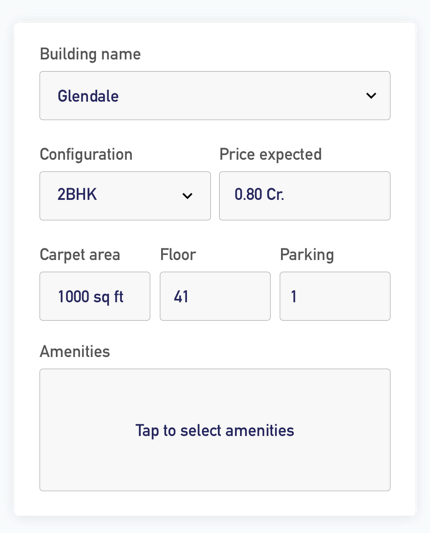

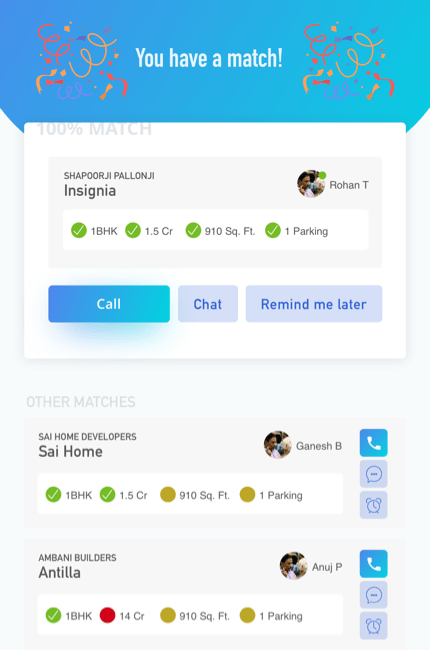
Finally, the pretty pixels 🥰
Once the wireframes were in place, things got easier. We played around with dozens of design directions before one felt just right.
The biggest challenge was to strike a balance between friendly design and a design which doesn’t lead to fatigue (we knew that if the product picks up, it will be used for several hours every day). The little interactions had to be interesting, yet subtle enough to not annoy the users if they see them dozens of times every day.
From my experience, I knew that Illustrations do an amazing job at explaining things. Taking these visual directions early in the design process helps move faster.

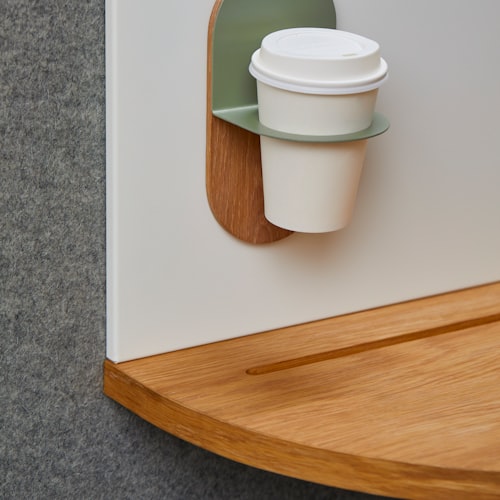





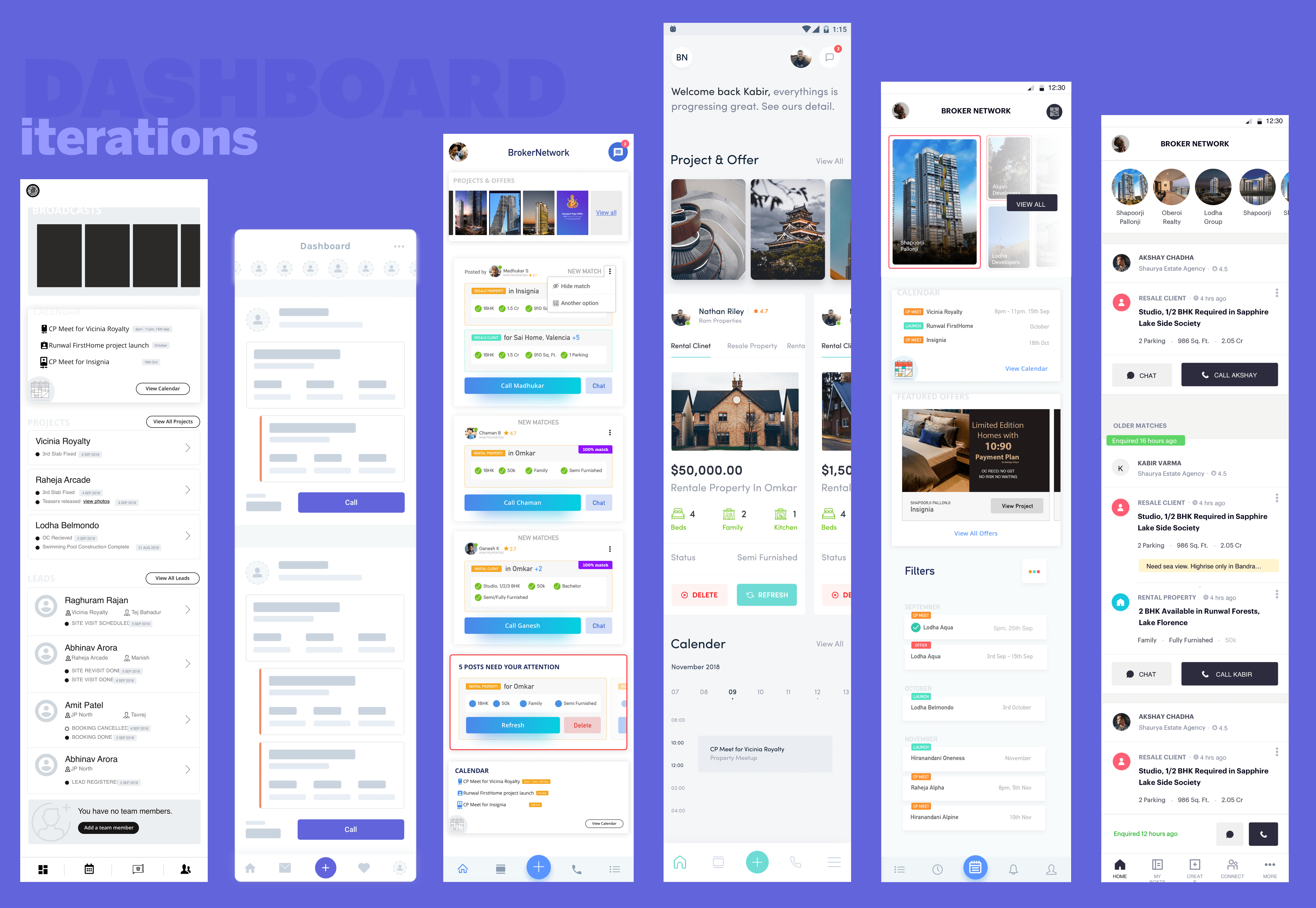
Final visual designs
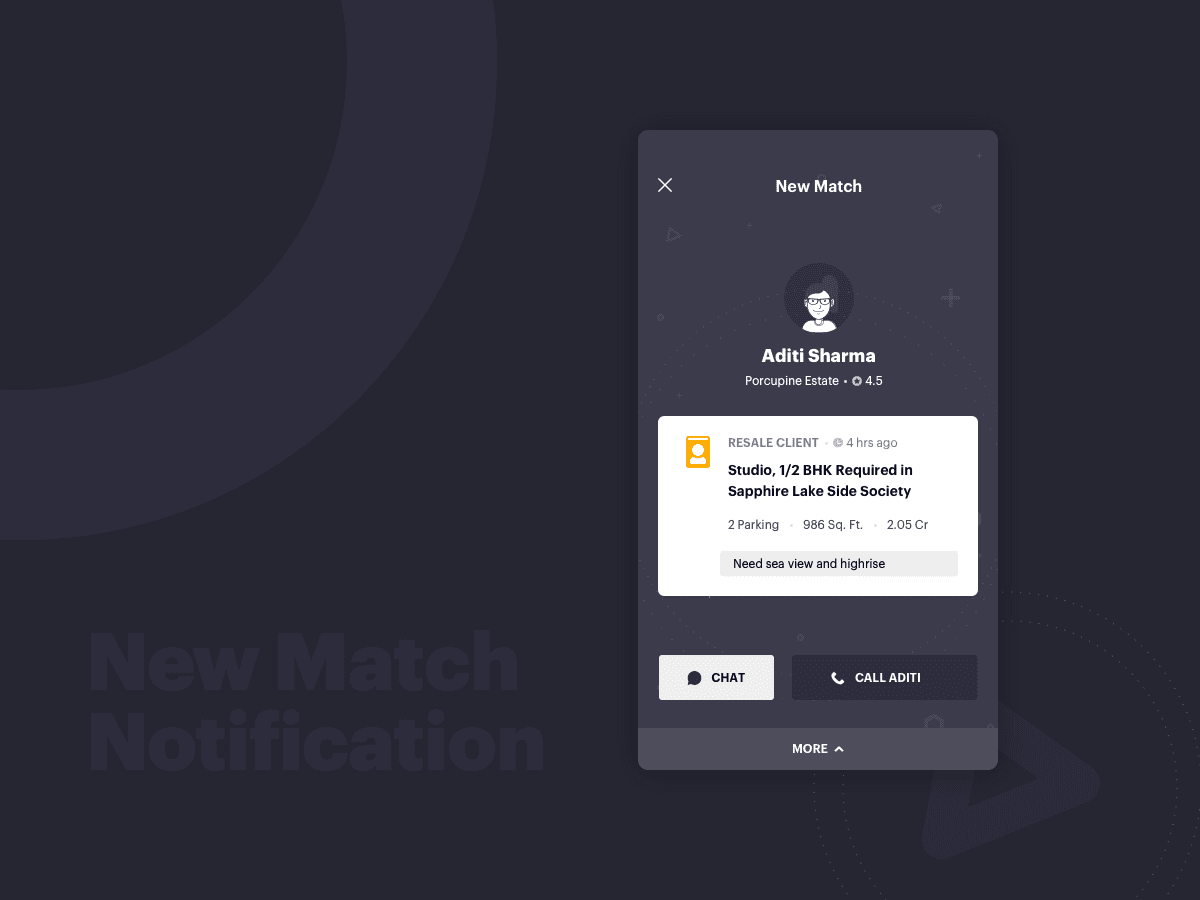
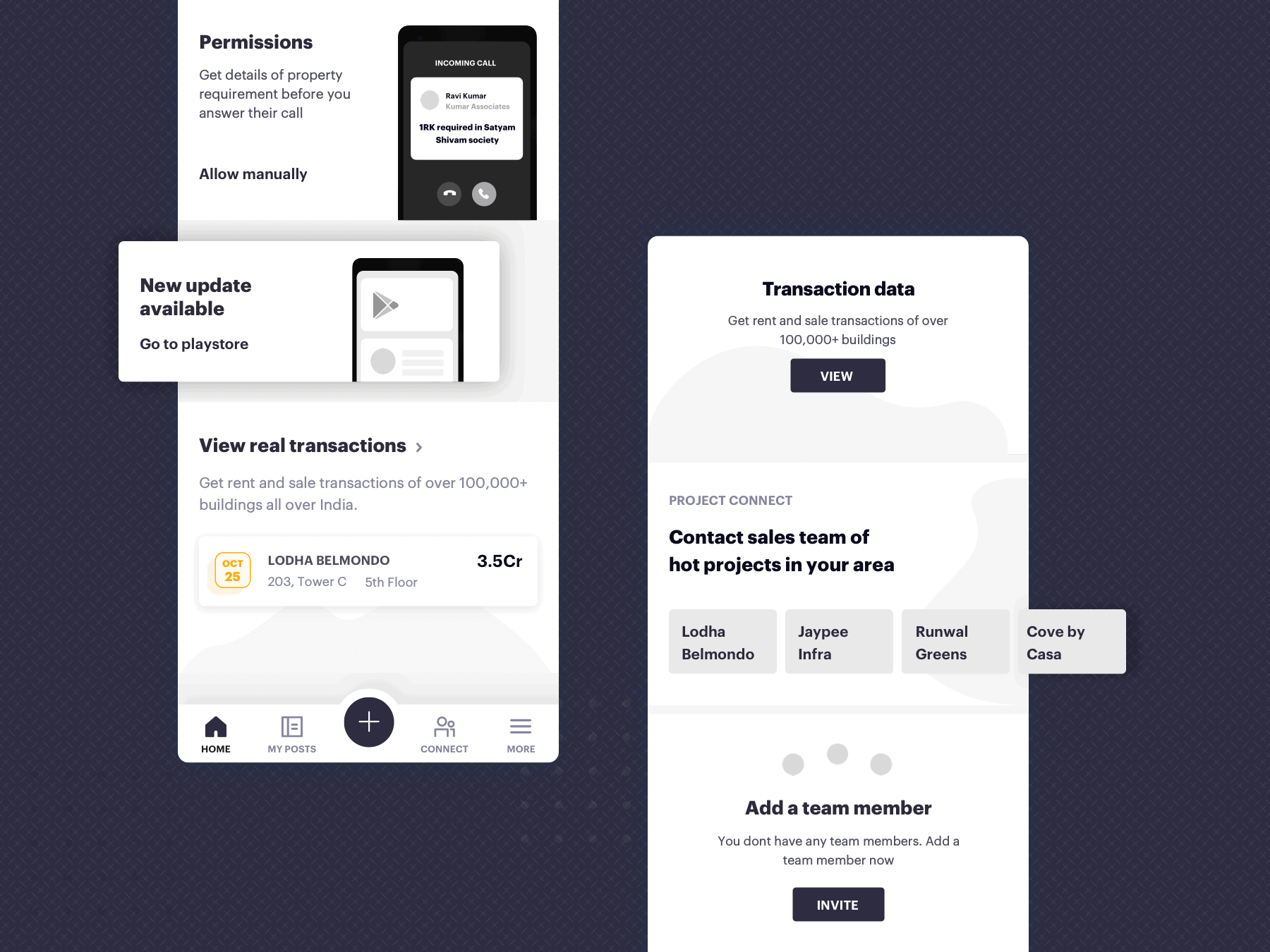

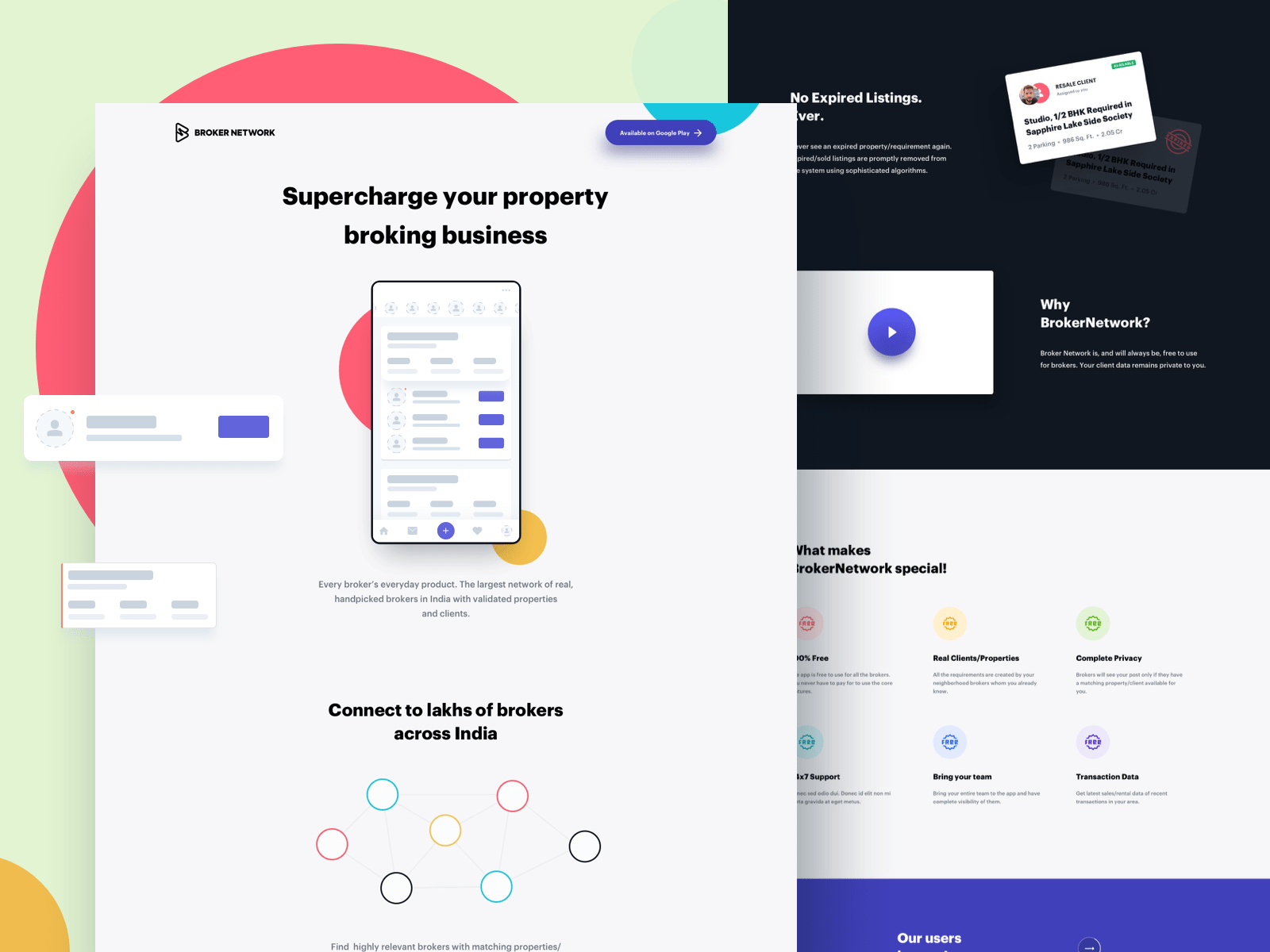
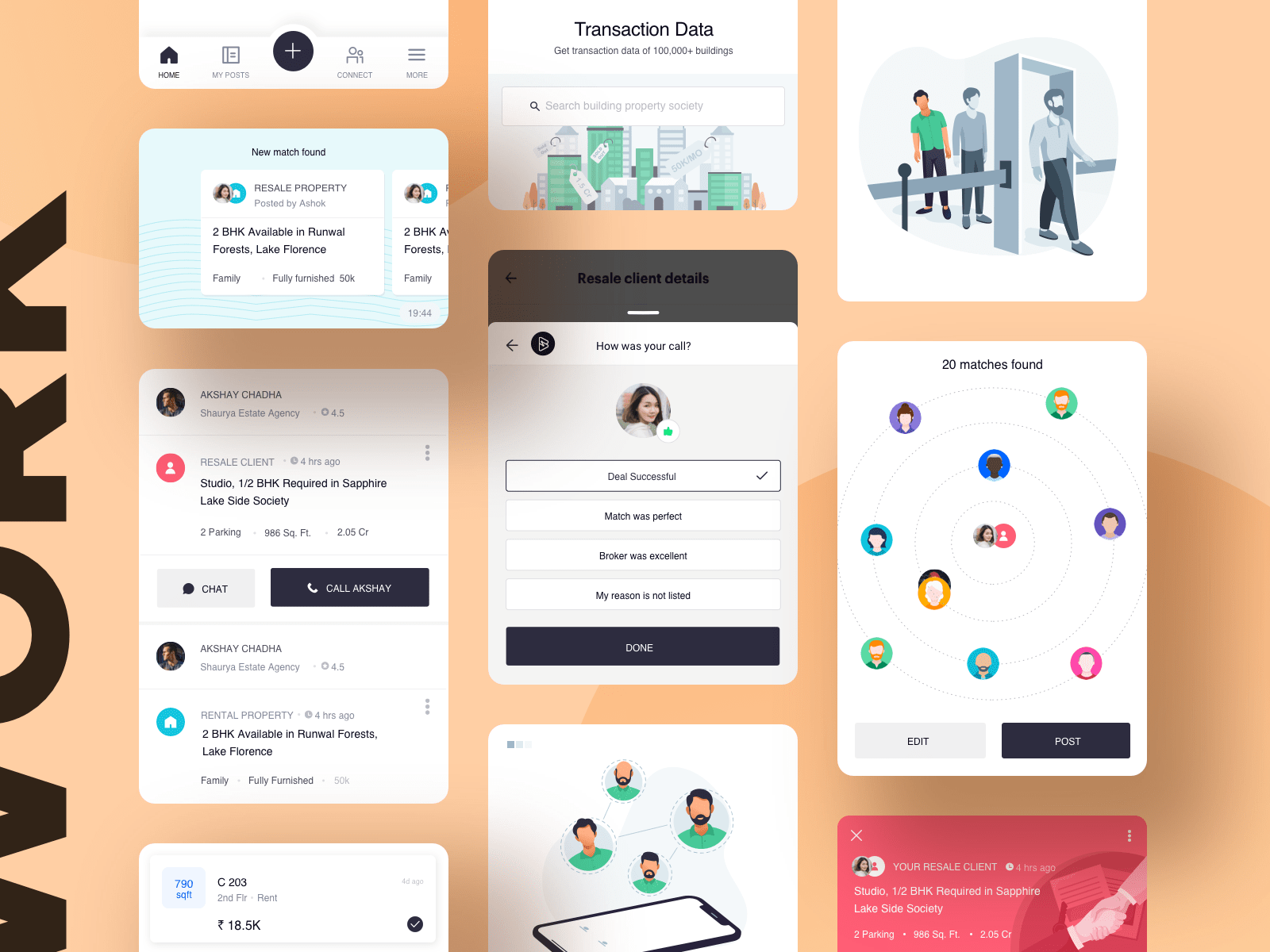
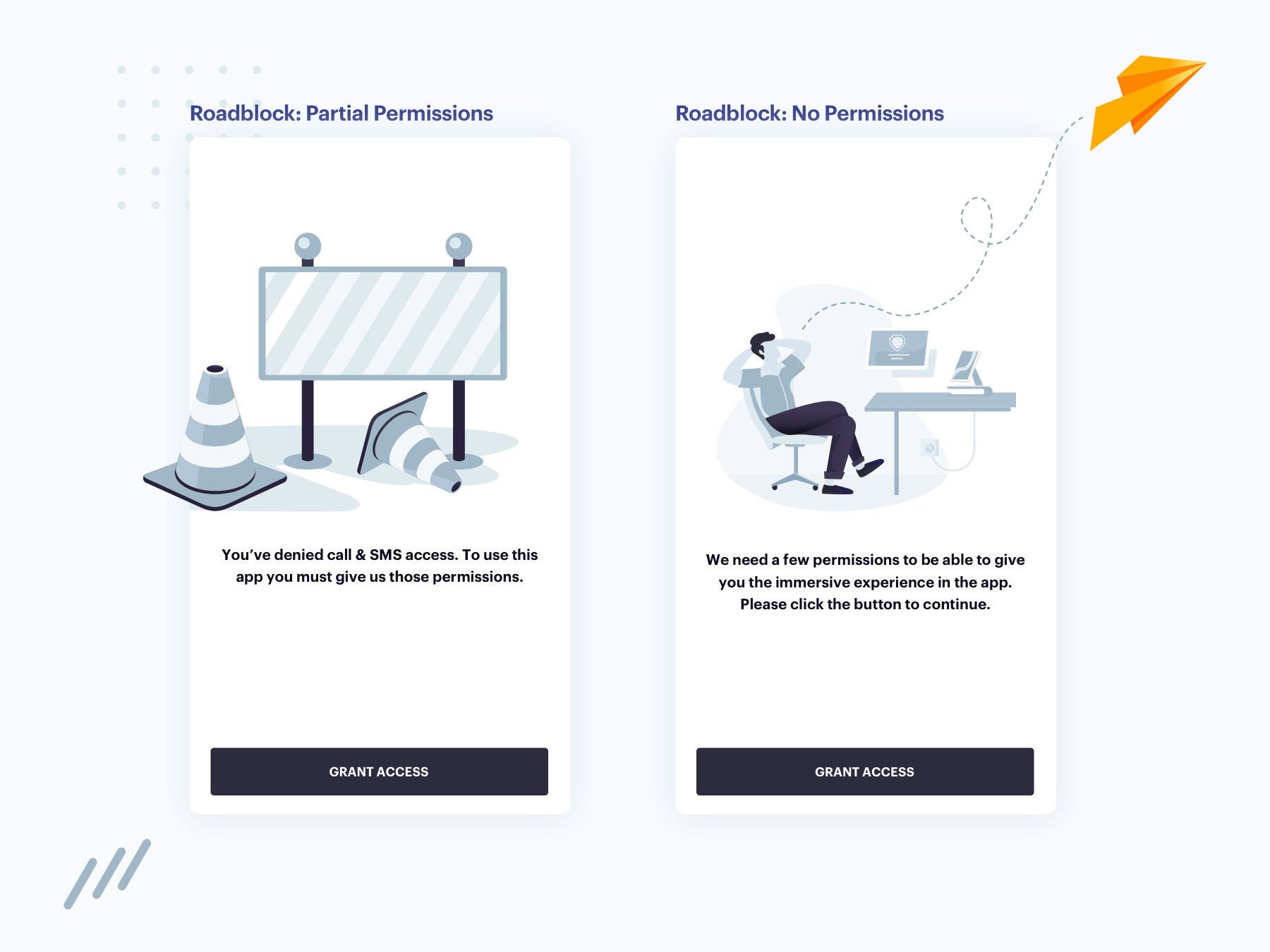
Launching the product was only half the story
From early on, I knew that I’ll need a powerful analytics stack to make sure the progress is measurable. Because of the geographical launch strategy and the closed, invite-only, platform, we needed minute yet complex data to understand and analyse the product performance. This was important since we were making iterations as quickly as possible. Due to the nature of the industry, re-acquiring lost users would be both time-consuming and expensive.
I had used Mixpanel for two earlier large-scale projects, H&R Block & Curiositi, so it was an easy pick. Apart from that we used crashlytics, which was an obvious pick because, well, Android, and Amplitude as a backup.
Here’s what the stack looked like:
Segment – for sending & managing events efficiently.
Mixpanel – for individual user & event tracking.
Crashlytics – for crash analytics.
Amplitude – as a fallback for events.
We also used AppSee intermittently to check specific sessions whenever required. The amount of insight we got from session recordings didn’t justify slowing down the app (by even nanoseconds).
After months of work, the app finally went live with limited access. We wanted to have a close watch on it’s usage so we restricted access to only invited users.
Several weeks prior to launch, we handpicked a few hundred brokers in a small area in Pune and added them to a whitelist, which would later work as a list of people we’d have regular followups to check usage. During this, I was simultanously working on an analytics stack which would help us get realtime data on usage, bugs & patterns.
Once it’s launched, we religiously followed analytics to make daily updates and fixes to the app. The goal was to lower the abandonment rate as much as possible before launching the app in another location.

War room dashboard showing all the actionable metrics.

All the important app events spread over a month

One of several funnels we built to view efficiency of features

A split of actions taken on each story


We used segment to distribute events across multiple platforms

A major part of my work, post launch, was to find out offending users & isolate them instead of building fences.

I used cohorts to identify usage patterns and predict what behaviours lead to churn
Client quote
“Few people have the opportunity to work with someone ridiculously efficient like Arun. I’d highly recommend him if you’re building a digital product from scratch.”
The results were overwhelming
As of January 2020 the rollout is still in progress and the app has been launched in 15 localities in 2 cities. One of them is Mumbai which contributes to 30% of all the real estate sales in India, in terms of revenue.
We personally onboarded 400 users in the first month, 500 in the second and then let it grow. As of January 2020, Broker Network had 2500 active users.




